We have a variety of shrubs and trees that provide fruit in every season. Here are just a few:
Bayberry
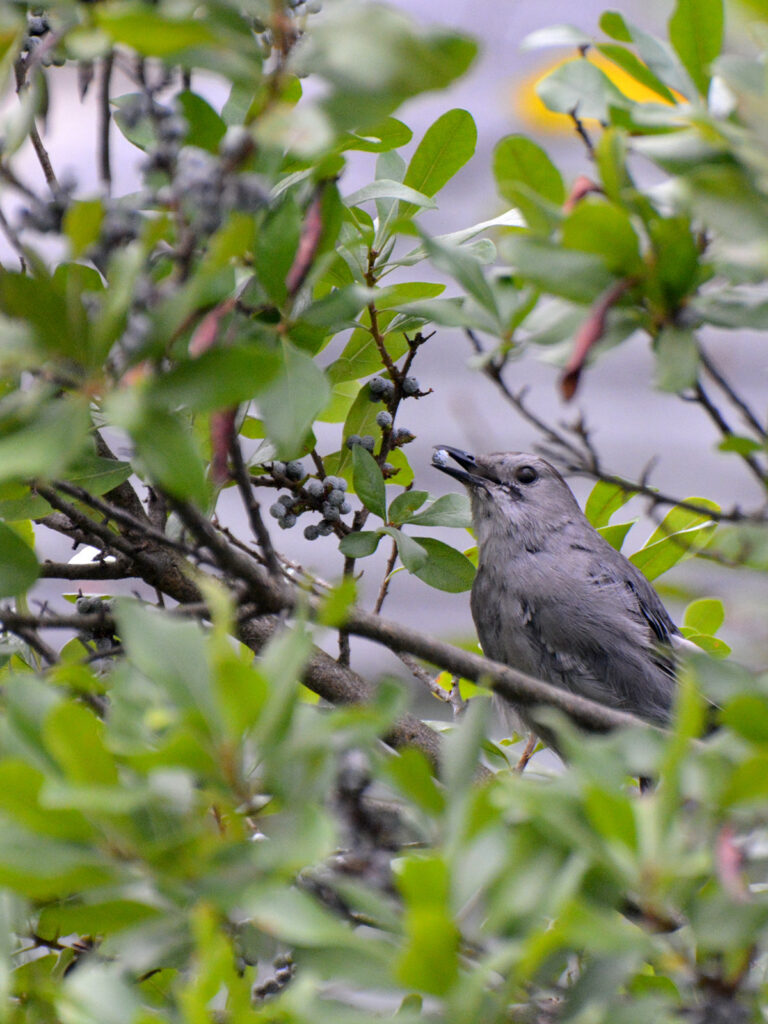
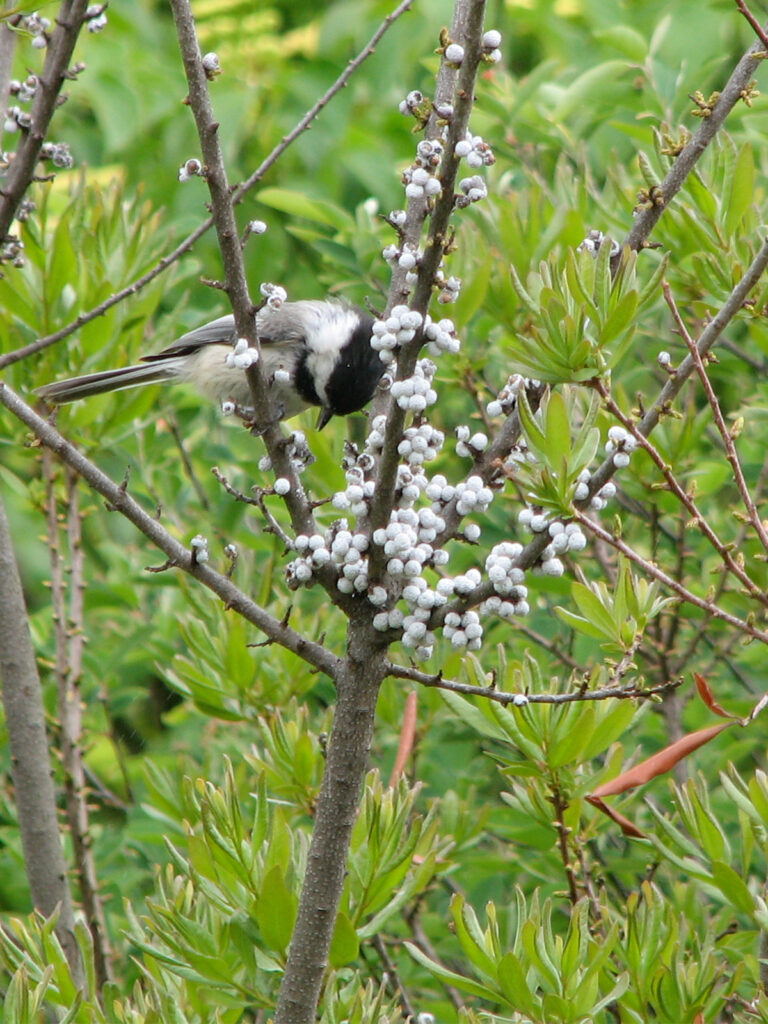
One of the bushes I most enjoy is Northern bayberry (Myrica pensylvanica). I not only like the looks of the plant during the growing season — the word “fluffy” always comes to my mind — but I also like seeing the birds enjoying its gray berries. Chickadees and catbirds are especially fond of them.
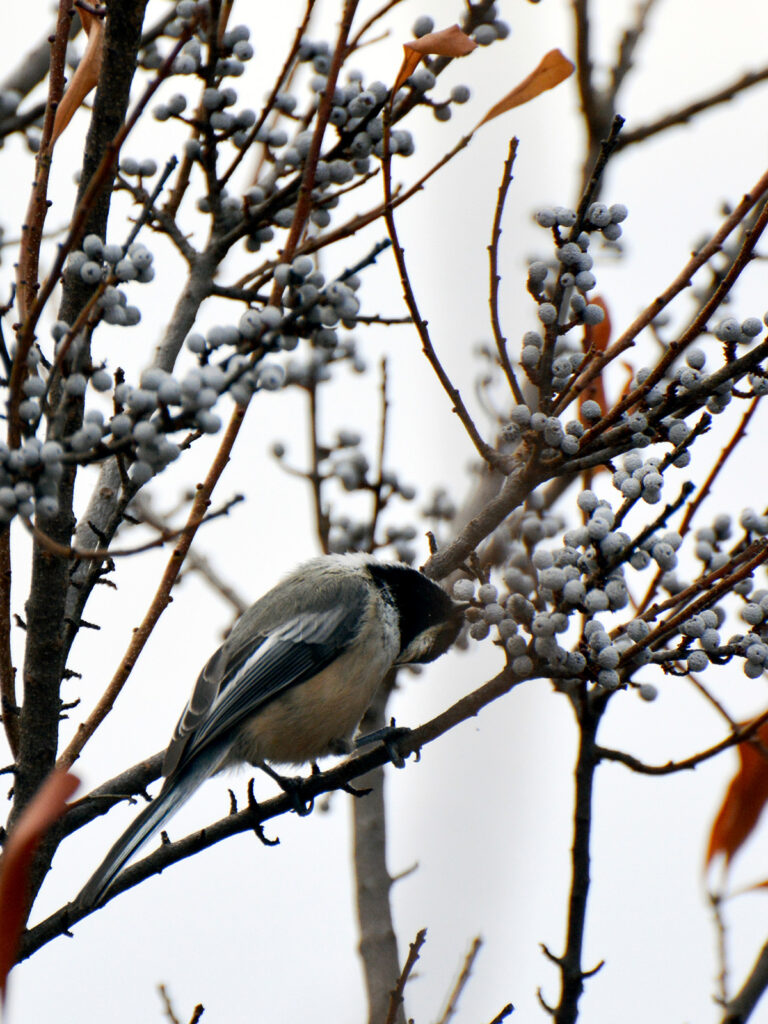
These native berries are especially important for migrating birds and for birds in the winter since they have a very high fat content — more than 50%! No wonder early colonists used these berries to make the fragrant bayberry candles! (Of course, modern “bayberry” candles are just scented, not made from actual berries.)
The berries last through the winter, so they’re a good source of food and energy during those cold months, too.
Bayberry is dioecious — in other words, plants are either male or female. The females, of course, have the berries so we want mostly female plants. Our one male plant pollinates our five females.
Since the plants aren’t generally labeled as male or female, though, I found that a good time to buy large plants is in the fall when you can actually see berries on the females. An alternative is to buy a bunch of less expensive small plants, wait to see which are female or male, then remove the extra males (or just let them remain as an attractive shrub).
One interesting fact from All About Birds: The yellow-rumped warbler is the only warbler who is able to digest the bayberry berry’s waxy coating. This enables it to winter farther north than other warblers.
Serviceberry
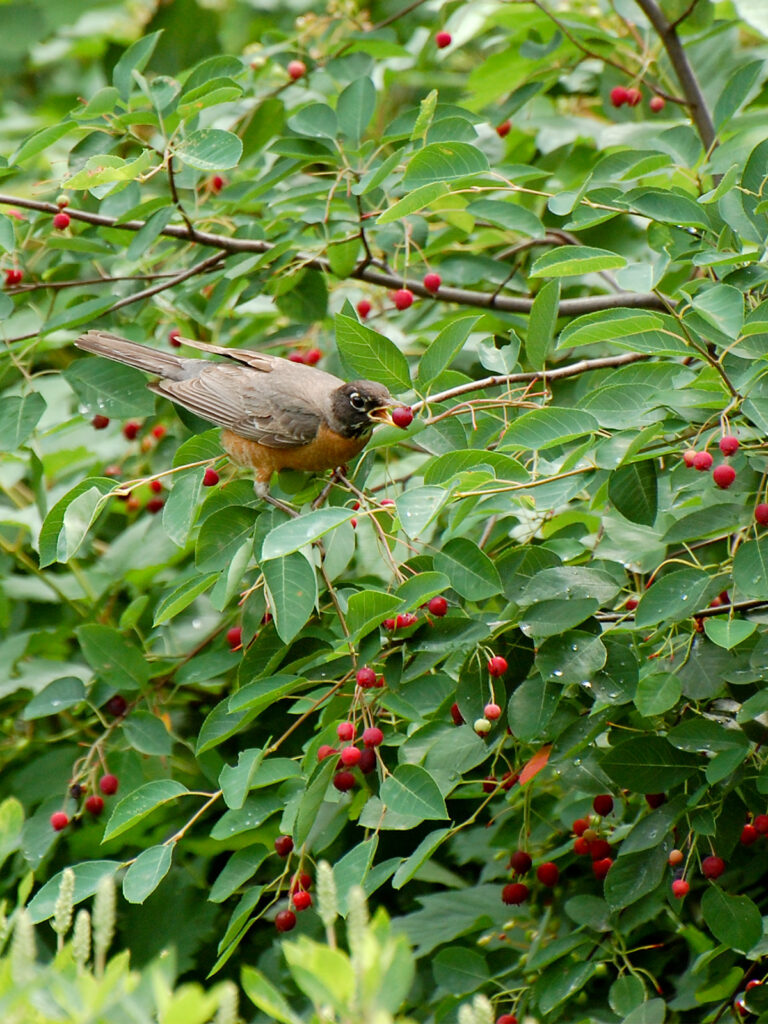
Birds LOVE serviceberries (Amelanchier canadensis), especially catbirds and robins. They can hardly wait for them to ripen.
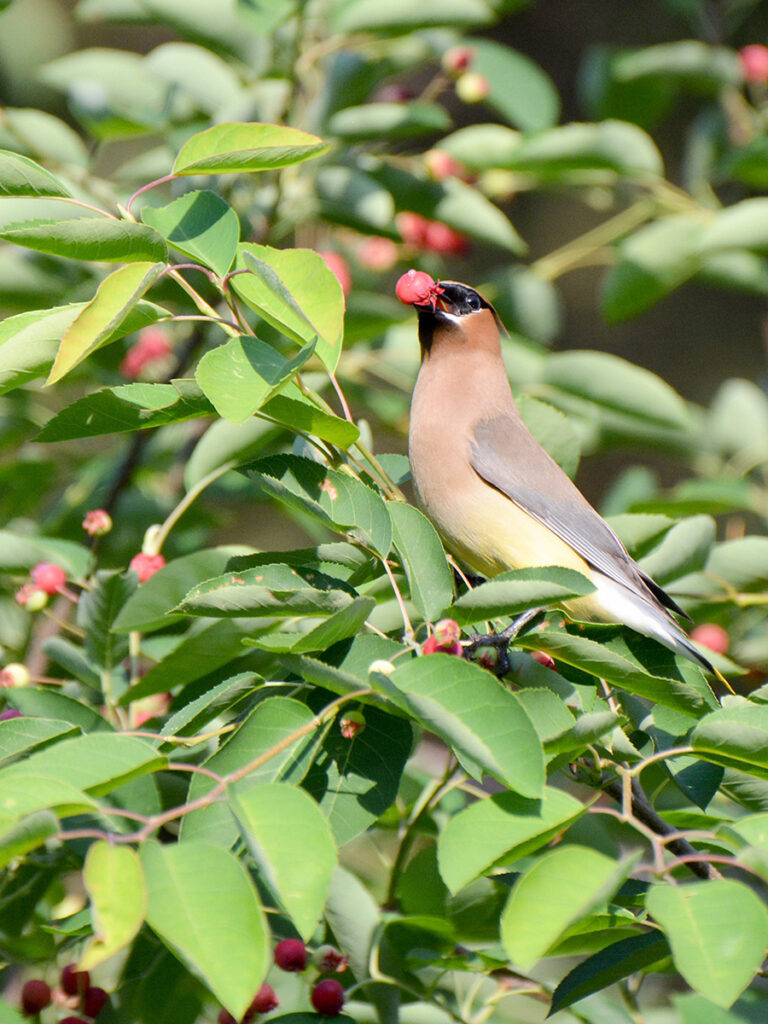
Cedar waxwings love them, too.
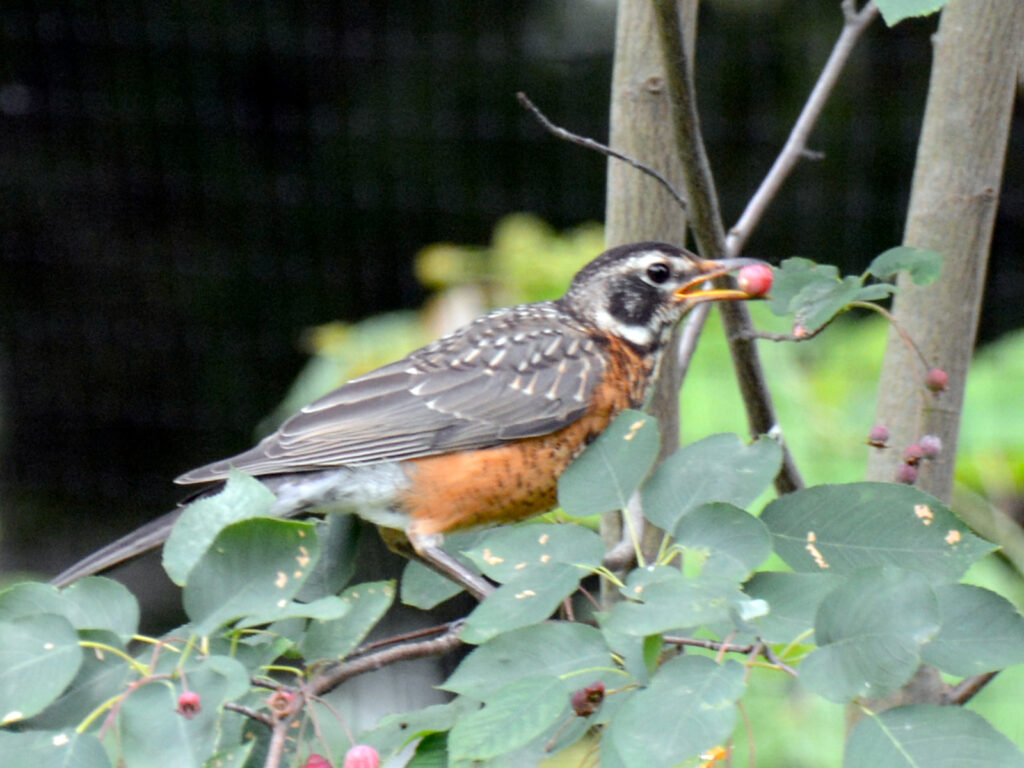
We grow a number of species: Shadblow (A. canadensis), allegheny (A. laevis), and a naturally-occurring hybrid of A. laevis and A. arborea, the apple serviceberry (A. x grandiflora).
We also have a saskatoon serviceberry (A. alnifolia), but that is native to the Northwest, so it’s not native here. We originally planted it since it was supposed to be good for people to eat (though all serviceberries are safe for people as I understand it). Unfortunately we didn’t find the saskatoon to be much more palatable that the other serviceberries. We’ll stick to blueberries and raspberries for ourselves and will be cutting back or removing the saskatoon.
Dogwood
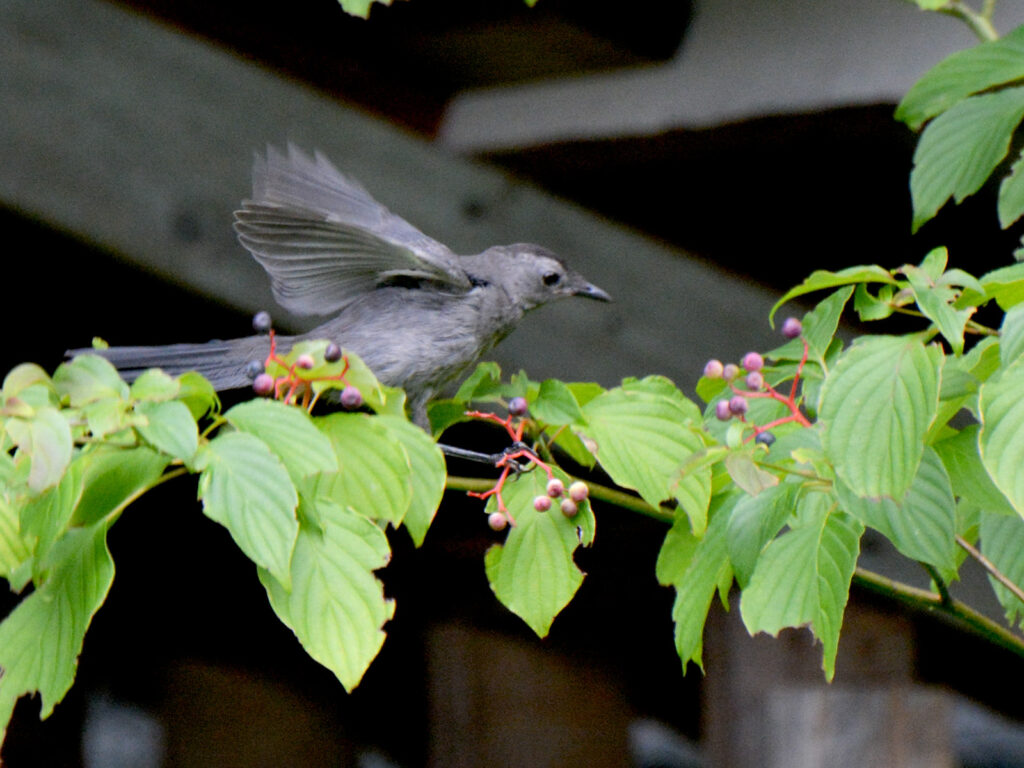
Dogwood berries are another bird favorite. We have a variety of dogwoods: gray dogwood (Cornus racemosa), silky dogwood (C. amomum), red twig dogwood (C. sericea), and (my favorite) pagoda dogwood (C. alternifolia).
One nice thing is that the berries of the various dogwood species ripen at different times, so they offer a continuous banquet throughout the summer.
Other berries and fruit
In addition to the other fruits shown below, we also have spicebush berries, inkberries, winterberries, red chokeberries, black chokeberries, elderberries, wild cherries, and sometimes pokeberries.
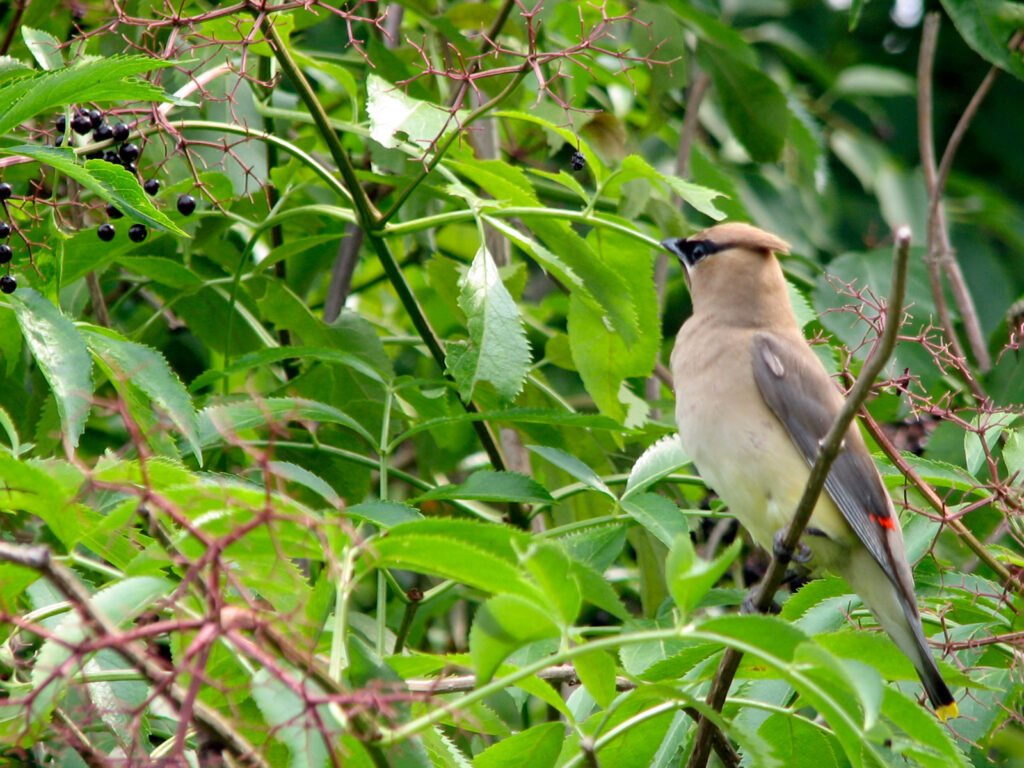
Besides the elderberries this bird is eyeing, CEDAR waxwings also love other berries, such as pagoda dogwood and, of course, juniper berries — in other words, berries from the Eastern red CEDAR (Juniperus virginiana).
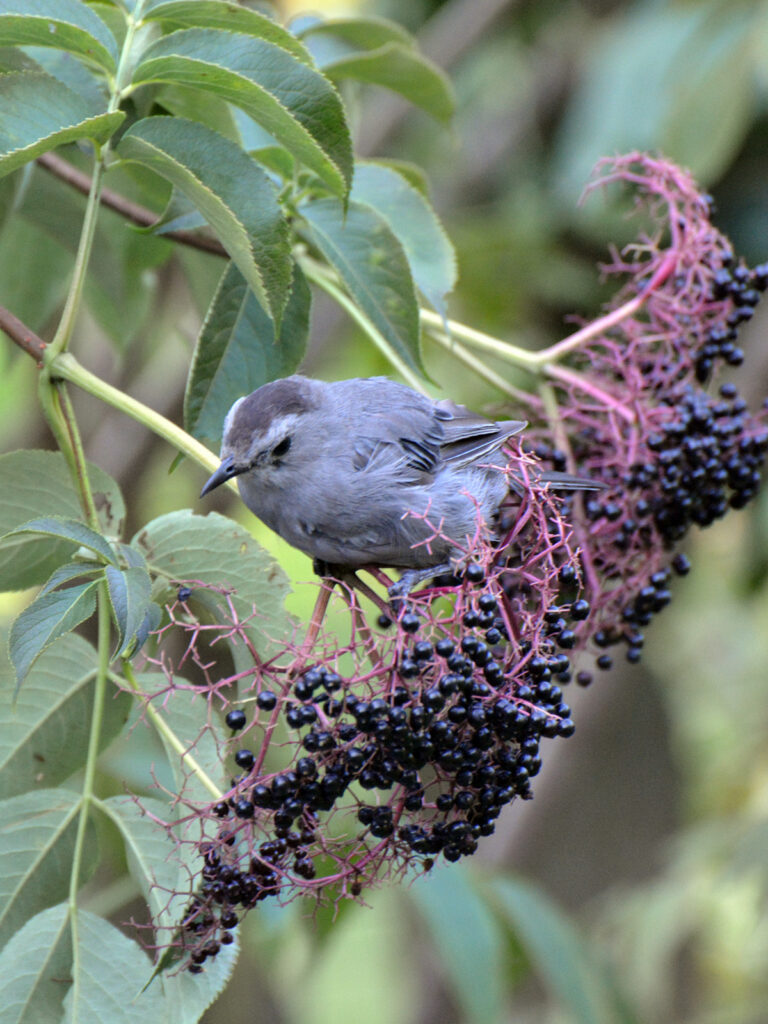
And as much as our catbirds love mealworms, they apparently love elderberries even more.
Once the elderberries ripened, they spent all their time there, completely ignoring the mealworms we offered.
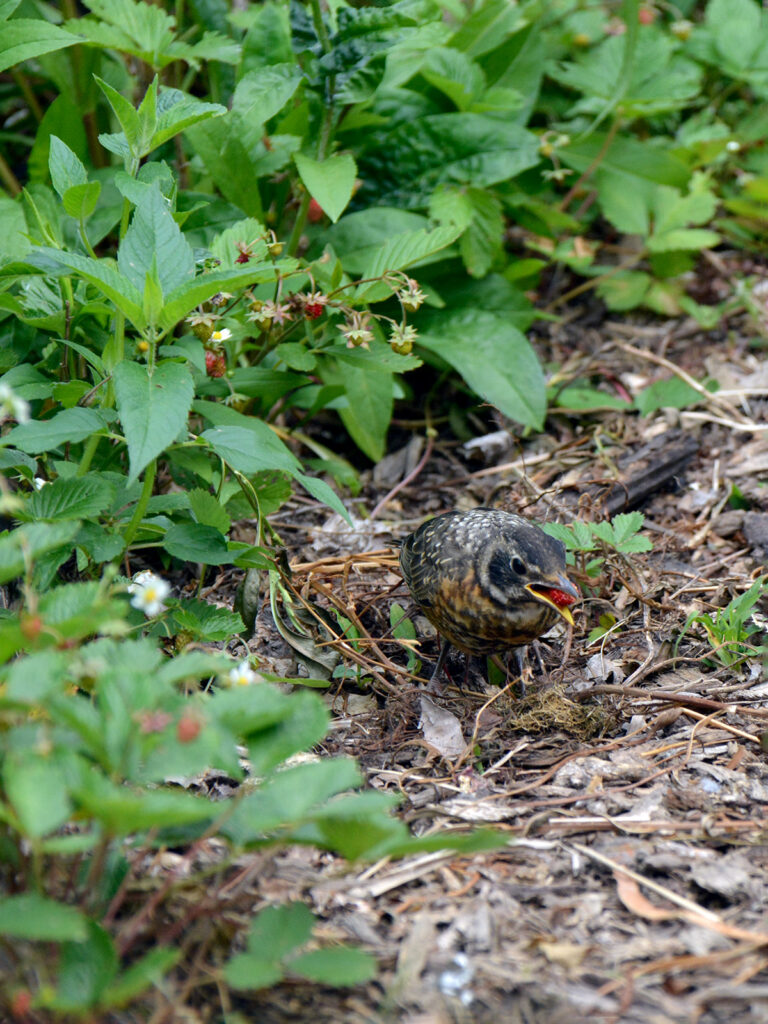
I had planted a few wild strawberries (Fragaria virginiana) in the past, not knowing how much they would spread. They don’t seem to be a problem, though, and the robin has enjoyed them.
He attacks them the same way he attacks a worm: tossing it repeatedly as he eats a bit by bit.
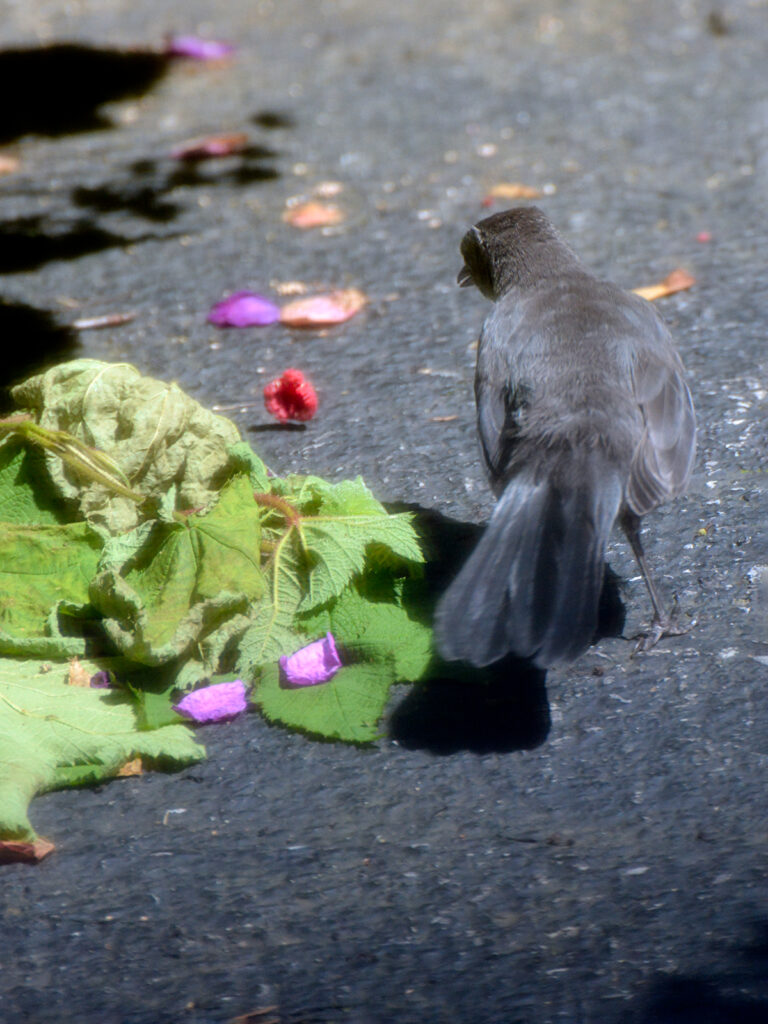
This catbird is enjoying the fruit of the flowering raspberry (aka thimbleberry).
It’s supposedly edible for humans, too, but edible does NOT equate to tasty. I’ll leave it for the birds.

Orioles visit our yard only a few days a year. For these special times, I put out an orange (in the platform feeder).
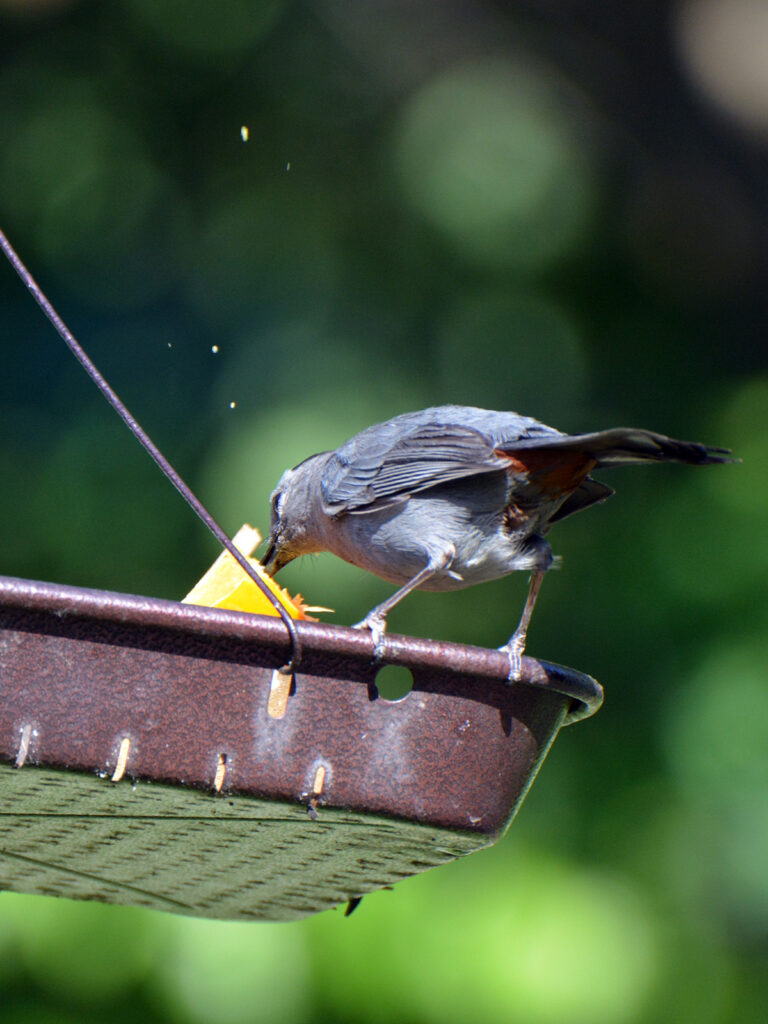
One year we had a catbird that seemed to especially enjoy oranges!
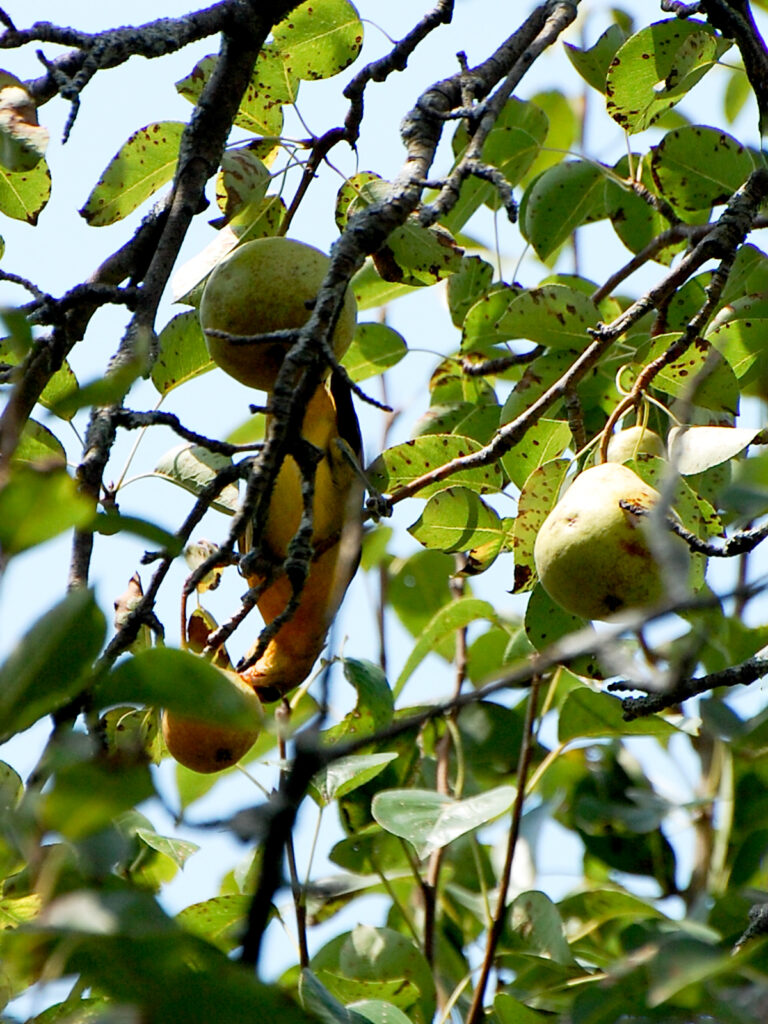
This one did stay around long enough to nibble at one of our pears!
Forbidden fruit
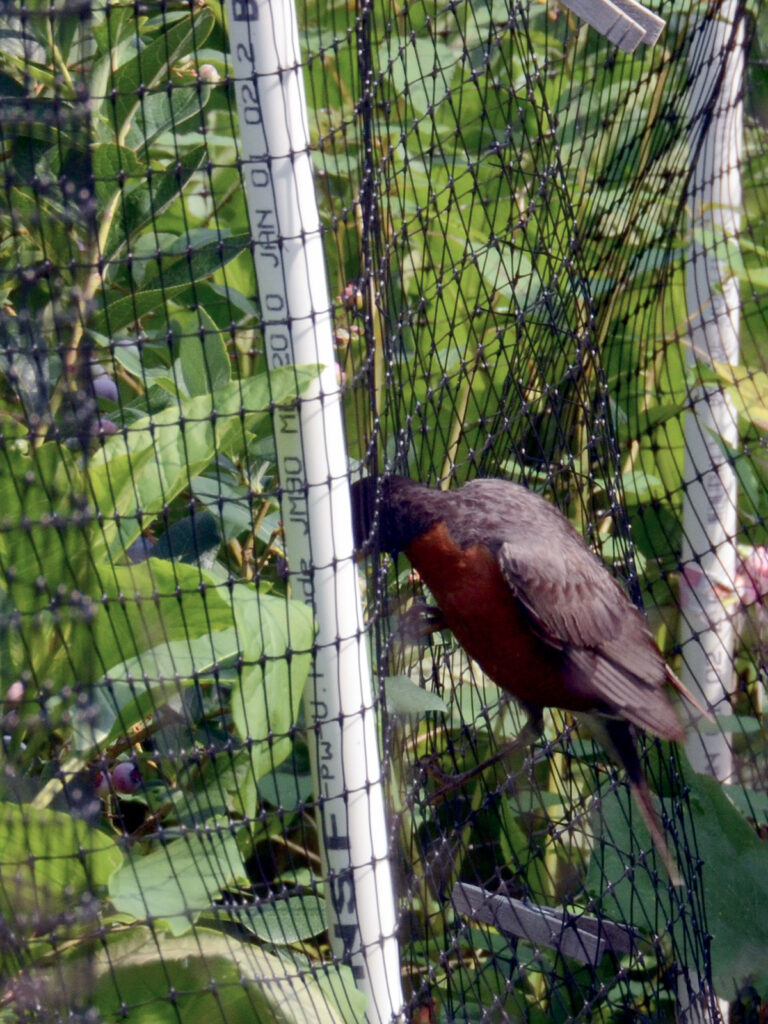
We protect our blueberries by creating a temporary “house” for our berries, but despite this it’s too tempting for birds, who can see there’s good stuff inside.
We monitor it closely since a few birds are smart enough to get in this cage but aren’t smart enough to get out.
More photos of the cage we erect when blueberries start to ripen are on Our Edible Garden website.
Other forbidden fruits are our raspberries, currants, and gooseberries. We share the sour cherries at the top of the tree, but hope that they will keep away from the reachable sour cherries at the bottom of the tree.
Resources
- Audubon Society:
Reflections
Sorry, birders: I must now hit this nerve. The fact that a plant feeds birds does not vindicate its use. It is true that without the northward spread of multiflora roses, we Yankees would not enjoy the song of mockingbirds on moonlit nights. But if those rose hips enable one bird to make it through our northern winters, the meadows that might otherwise flourish where multifloras have invaded would support many more bird species on the myriad insects they provide in spring and summer, the variety of the grains and flower seeds they offer in the winter, and the rodent diet they serve up throughout the year. One slaps the label “weed” on a species, not because it is without virtue, but because whatever virtues that plant may have cannot outweigh the countless virtues of the entire habitat it displaces.
~ Sara Stein, Planting Noah’s Garden, pp. 172-173
I value my garden more for being full of blackbirds than of cherries, and very frankly give them fruit for their songs.
~ Joseph Addison
